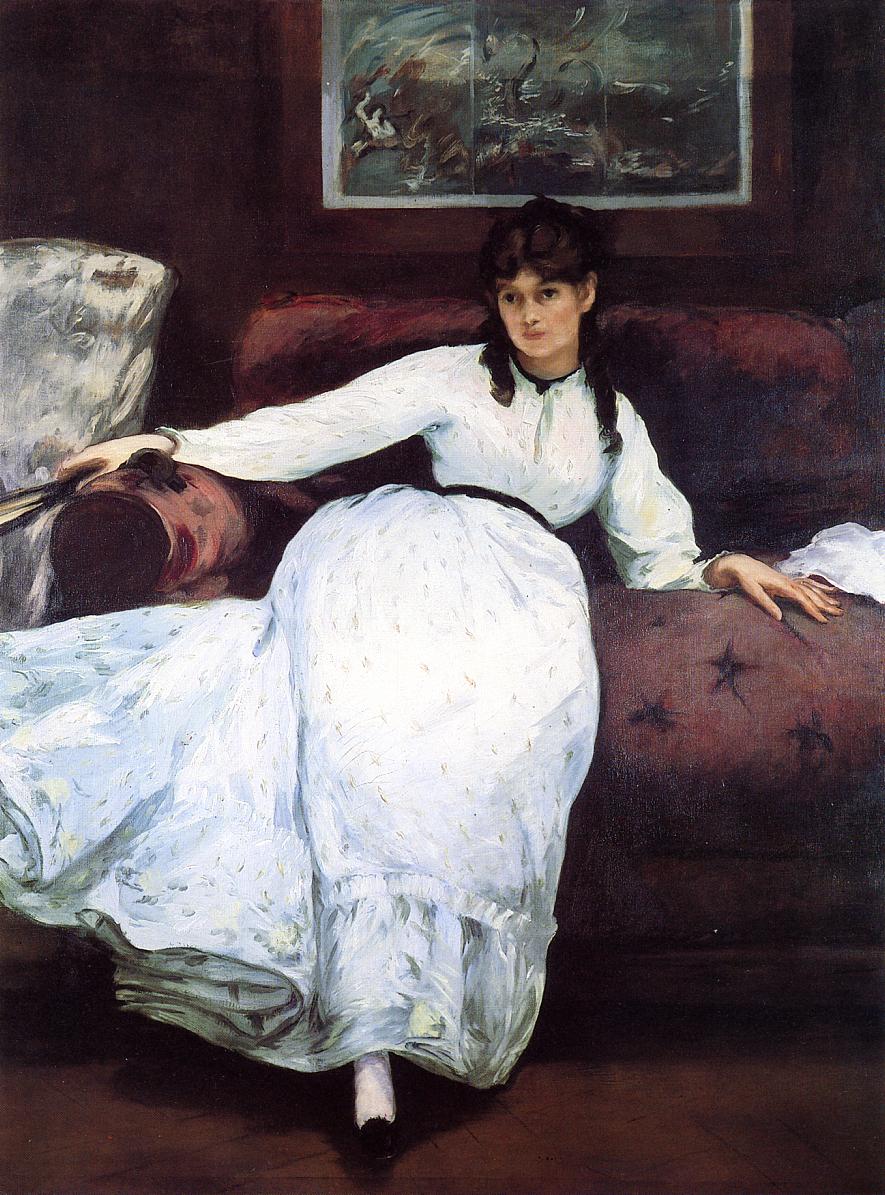Édouard Manet, The Repose, 1870
58.27 x 43.7 in.
Édouard Manet (1832-1883) was one of the most influential painters of the nineteenth century. A forerunner of Impressionism, Manet was one of the first artists to focus on modern life in his work and was pivotal in the shift from Realism to Impressionism. Born in Paris, Manet's aptitude for art was particularly encouraged by his uncle, and after some initial resistance from his father, he began a traditional art education. He studied under an academic painter and traveled Europe to see the works of the old masters. Manet's early works are generally in a Realist style, but he soon began to develop beyond that trend. In 1863 Manet produced two of his best known works, Le déjeuner sur l'herbe (Luncheon on the Grass) and Olympia. Both were inspired by Renaissance paintings, transposed to the context of modernity. Luncheon on the Grass was rejected by the Salon, but Olympia was accepted. Nevertheless, Manet was considered a rebel and it was clear that a new movement was starting. The last major work in his short life was Bar at the Folies-Bergère (1882) which is a fascinating and beautiful exploration of modern life and the way people relate to each other and their world. The Repose is a portrait of the great painter Berthe Morisot, who was married to Manet's brother and sat for him multiple times (and whom I will be featuring tomorrow). Manet never exhibited with the Impressionists and was therefore never an official part of the group, but he became acquainted with them through Morisot, who was an official member of the group. When first exhibited, The Repose (like many of Manet's works) caused something of a stir. The pose was considered too laid back and casual, lacking the formality that young ladies usually demonstrated in their portraits. Of course the equally loose brushwork was also deemed unacceptable. To my eye, Morisot does not appear especially laid back; she is casual certainly, but thoroughly engaged in her surroundings. To me this is suggested by her pose, for she is relating to the couch she is sitting on and her visible foot suggests action and mobility. Even more important is the rendering of Morisot's face. Manet depicts her with a keen expression, her jaw is set and she is engaged in deep thought. One of the things Manet manages to convey is the great mutual respect between subject and painter. This piece is a collaboration between the two artists and they achieved a painting of great beauty and interest.

This is a very relaxing painting, it conveys such ease and grace. Thank you for posting. I look forward to your art shares.
ReplyDelete